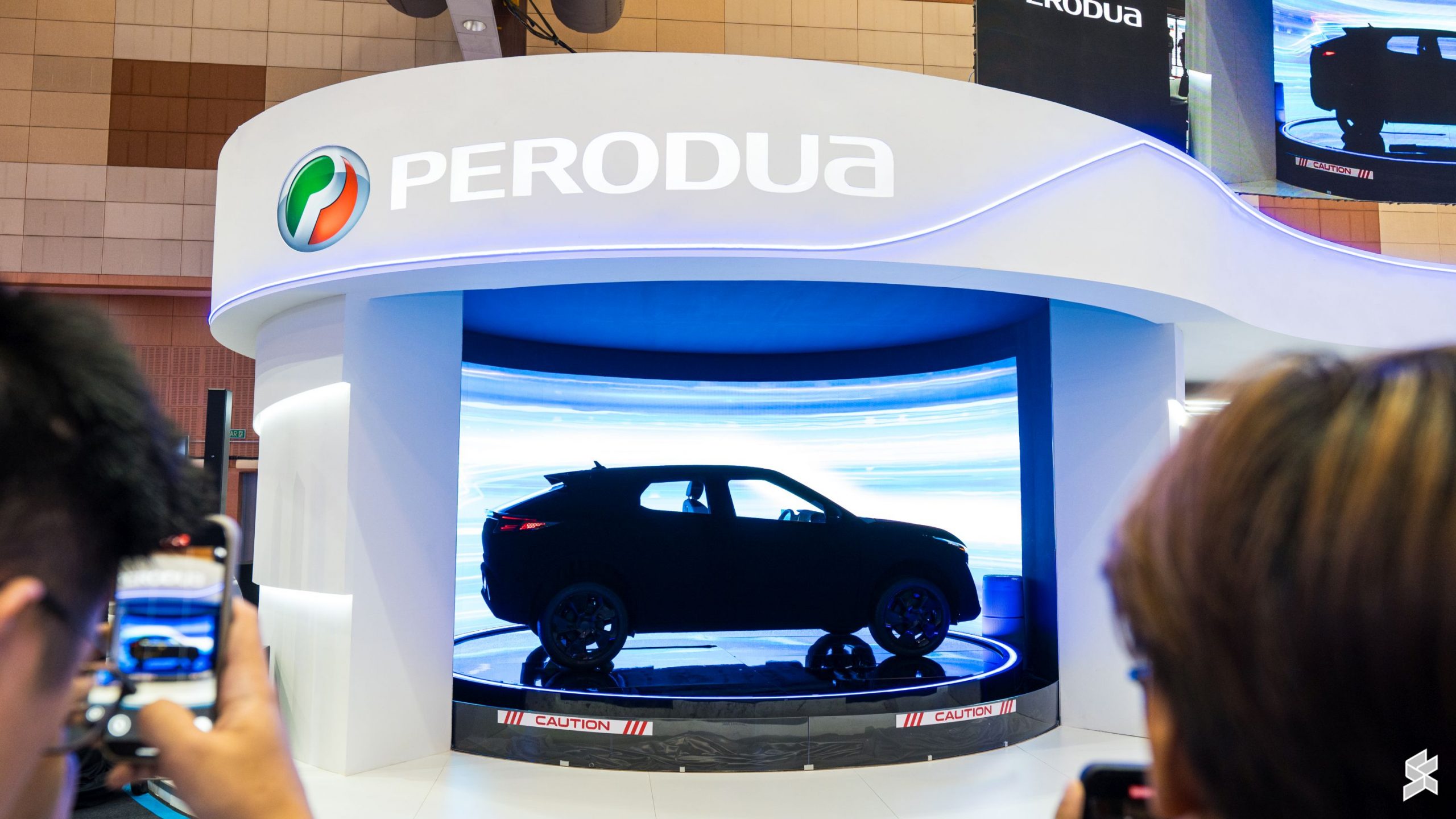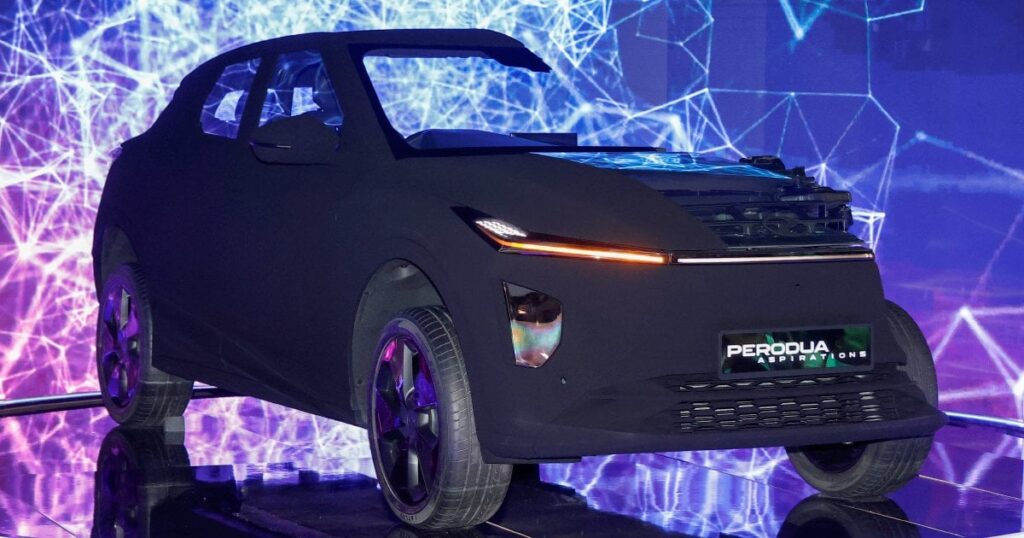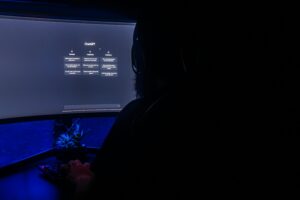Perodua, Malaysia’s largest automaker, is accelerating its electric vehicle (EV) journey through its ambitious Perodua EV strategy—aiming not only to manufacture electric vehicles but to drive a national EV transformation and reshape the Malaysia EV market.

Smart Build Strategy: The First Step to Electrification
Perodua launched its Smart Build strategy (or Transformation 3.0) in 2021 with a clear aim: to be globally competitive as well as sustainable in development.
The transformation is to strengthen:
- The capability of local suppliers to meet global standards.
- Upgrading dealer operations nationwide.
Strengthening Perodua’s Energy-Efficient Vehicle (EEV) ecosystem—where it has already sold over 1 million units. By partnering with government bodies like the Ministry of International Trade and Industry, Perodua set the stage for deeper localisation, improved quality, and greener mobility solutions.
A First Sneak Peak: Perodua’s EV Prototype Revealed
In May 2025, Perodua launched its first EV prototype at the Malaysia Autoshow 2025, signaling its serious intention to follow an electric vehicle future.
But this prototype was more than a simple design mock-up:
- It demonstrated that Perodua had the ability to design and develop EVs, without having to heavily rely on Daihatsu or Toyota.
- It is powered by a Lithium Iron Phosphate (LFP) battery, and LFP is seen as more sustainable and safer than other battery technologies.
- According to preliminary reports, the EV has an estimated range of 400-410 km, which is impressive for something in the entry-level sector.
- The vehicle is based on a new locally-developed platform, which says something about Perodua’s determination to be independent when it comes to technology.

Key Technology Partners: Magneti Marelli and CATL
For this EV transition, Perodua is engaging with some of the most respected names in its industry:
- Magneti Marelli is an Italian EV components company that will provide foundational parts, such as electric axles, battery management systems, thermal systems and inverters.
- CATL, the world’s largest EV battery manufacturer, is supplying the LFP battery packs.
With these partnerships, Perodua’s EV will benefit from strong technology platforms, and a globally recognised industry expertise in EVs.
Launch of Battery-as-a-Service (BaaS)
The most interesting aspect of Perodua’s EV plan is undoubtedly the Battery-as-a-Service Malaysia (BaaS) model.With this model, customers are charged a monthly fee (about RM 200) for the EV battery rather than acquiring the battery making electric vehicles in Malaysia more accessible through lower upfront costs.
Benefits include:
- Lower upfront payment for the vehicle.
- Possibility to upgrade or change the battery at the normal lifecycle of the battery.
- Active battery health monitoring.
However, experts raised questions:
- Some Malaysian consumers may prefer ownership.
- Diminishing battery prices make leasing less appealing.
- The battery swapping model remains untested.
Strong communication and a robust and comprehensive afterservice will be critical for success.
Production Schedule and Localisation Targets
Perodua is moving with some urgency.
- It is expected that pre-production will begin in late 2025.
- Initially, at the beginning of mass production, we will produce 500 units per month and then ramp up production as demand increases to over 2000 units per month.
Localisation is the core:
- The EV will launch with approximately 30% local content.
- Perodua’s goal is to achieve a localisation content target of over 60% after the launch.
This aligns with Malaysia’s Low Carbon Mobility Blueprint (LCMB) and the New Industrial Master Plan (NIMP) 2030, which aim for EV manufacturing, net zero emissions and digitised by 2050.
Malaysia’s EV Ecosystem: The Bigger Picture
Malaysia’s EV market is accelerating:
- 15% EV market share by 2030 and 80% by 2050 are important national goals.
- 10,000 plus EV chargers will be targeted by 2025.
- EV sales quadrupled in 2024 to more than 21,000 units.
In terms of incentives—including tax exemptions, and waivers on import duties—the Malaysia government also supports the market.
Just as Proton, BYD, and Tesla are now in the segment, Perodua’s low-cost EV is important to increasing user access to electric mobility.
Barriers Ahead
Perodua’s EV journey has started positively, but multiple barriers will still remain.
- Consumer Mindset: Will Malaysians accept battery leasing instead of owning outright?
- Infrastructure gaps: The coverage under chargers is still poor outside urban areas.
- Price sensitivity: Looking at a price under RM 80,000 is aspirational and necessary.
- Platform Risks: It is risky to invest in an initial new EV platform but essential to have future independence.
Conclusion: A national transformation underway
Perodua’s EV blueprint is more than this is a new car project. It represents:
- Strategic partnerships with leading world suppliers.
- Deliberate localisation positively impacts the national automotive sector.
- Electrification accessibility for everyday Malaysians.
- Technological autonomy with a new in-house EV platform.
By combining innovation, affordability, and national policy alignment, Perodua is poised to lead Malaysia’s EV revolution—paving the way for broader industry transformation.
🚀 Accelerate Your Brand’s Future with Strategic Innovation
📞 Book your strategy session with Beritarian and transform your vision into market leadership.





